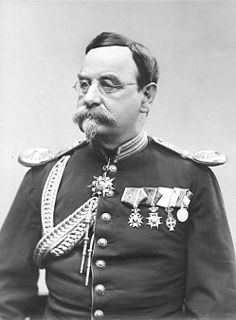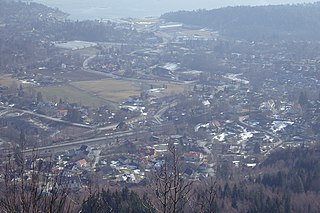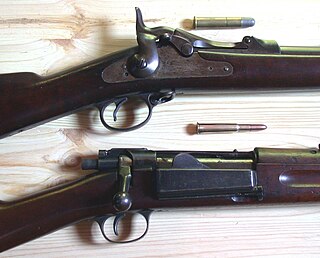Erik Jørgensen | |
|---|---|
 Erik Jørgensen | |
| Born | 17 May 1848 |
| Died | 9 December 1896 (aged 48) |
| Occupation | gunsmith |
Erik Jørgensen (17 May 1848 – 9 December 1896) was a Norwegian master gunsmith, well known for his cooperation with Ole Herman Johannes Krag in developing the successful Krag–Jørgensen rifle. [1] [2]

Norway, officially the Kingdom of Norway, is a Nordic country in Northwestern Europe whose territory comprises the western and northernmost portion of the Scandinavian Peninsula; the remote island of Jan Mayen and the archipelago of Svalbard are also part of the Kingdom of Norway. The Antarctic Peter I Island and the sub-Antarctic Bouvet Island are dependent territories and thus not considered part of the kingdom. Norway also lays claim to a section of Antarctica known as Queen Maud Land.

A gunsmith is a person who repairs, modifies, designs, or builds guns. This occupation differs from an armorer who usually only replaces worn parts in standard firearms. A gunsmith actually does modifications and changes to a firearm that may require a very high level of craftsmanship requiring the skills of a top level machinist, a very skilled wood worker, and even an engineer. Their level of craftsmanship usually requires several years of training and practical experience under a higher level gunsmith, attendance at a gunsmithing school, or both. A gunsmith also does factory level repairs and renovations to restore a much used or deteriorated firearms to new condition. They may make alterations to adapt sporting guns to better fit the individual shooter that may require extensive modifications to the firearm's stocks and metal parts. These repairs and redesigns may require fabrication and fitting of non-available parts and assemblies, which the gunsmith usually fabricates themselves. Gunsmiths may also renew metal finishes to new condition levels, or apply carvings, engravings and other decorative features to an otherwise finished gun. The environment in which all this takes place often varies depending on the specific locality, with some gun stores featuring one or a handful of individuals performing this work under their roof, some may work as individuals in their own, separate shop, or it may be a group of highly trained specialist craftspeople who each contribute their individual skill to completely manufacture highly crafted custom made firearms from basic metal and wood raw materials.

Ole Herman Johannes Krag was a Norwegian officer and firearms designer.
Erik Jørgensen was born in the parish of Asker in Akershus, Norway and grew up on the farm Solstad. [3] He educated himself to be a gunsmith and started working at Kongsberg Våpenfabrikk (the most important Norwegian weapon factory) in 1870. It was here that he met Ole H J Krag, and from 1871 Jørgensen worked with Krag on his rifles. As time went on, Jørgensen turned from just doing work for Krag to be an active participant in the development of the rifle which later became known as the Krag–Jørgensen. [4]

Asker is a municipality in Akershus county, Norway. It is part of the Greater Oslo Region. The administrative centre of the municipality is the town of Asker. The municipality was established as a municipality on 1 January 1838.

Akershus[²ɑːkəʂˌhʉːs](

Kongsberg Gruppen is an international technology group that supplies high-technology systems and solutions to customers in the merchant marine, defence, aerospace, offshore oil and gas industries, and renewable and utilities industries.







